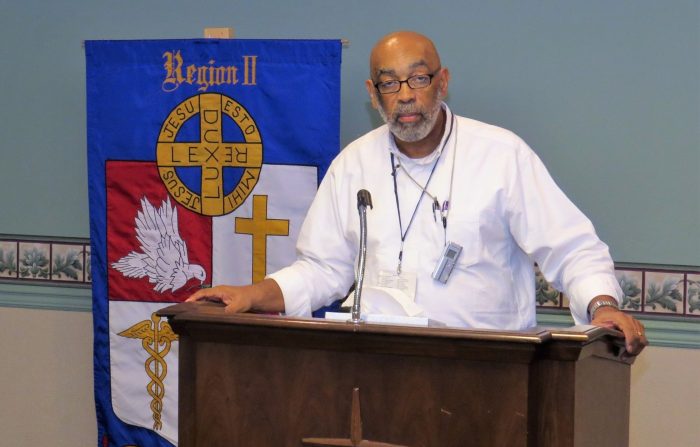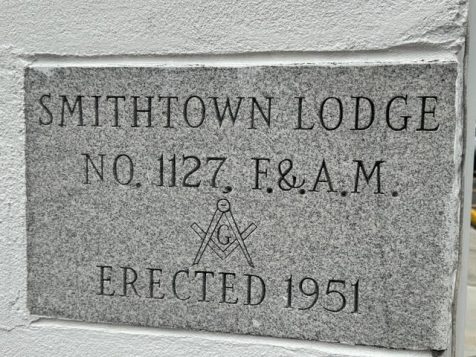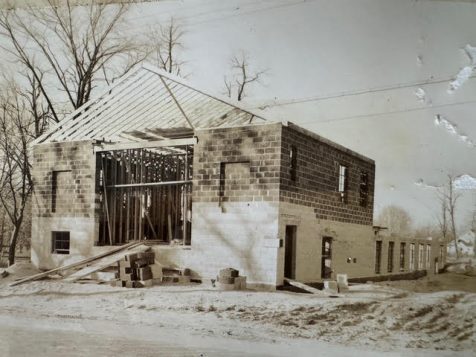By Beverly C. Tyler
The Smith/Swift/Tyler/Davis house, built about 1740, was home to many generations. On June 1 and 2, the house at 97 Main Street in Setauket will function as the central hub for Gallery North’s 20th Annual Wet Paint Festival. The history of the house itself, as well as the families who have lived there, is a representation of the story of the growth of the Three Village community; of farming, transportation, commerce and trade.
The original section of the house was constructed with white oak timber framing. Over the frame and on the floors were white pine boards; on the roof were red cedar shingles. These were the trees found locally and used to build most colonial-era buildings in this area. For more than 100 years, this was a farmhouse on an active farm with many out-buildings. In the original house there were two rooms on the first floor and three bedrooms on the second floor.
As a family home and farm, many generations of two prominent families lived here. Amos Smith and his wife Juliana Hawkins raised five children, born between 1773-1785. When Amos died intestate in 1799, an inventory of his home and farm included household goods, farm tools and farm animals. Their son, Walter Smith and his wife, Elizabeth Ellison, raised five children here, born between 1811-1825.
About 1831, Joseph Swift purchased the house and farm. Joseph and his wife, Amelia Bacon, raised nine children here, born between 1832 and 1851. Joseph’s eldest daughter Eliza married Charles B. Tyler, my great-grandfather, in 1851. Charles purchased the house and farm in 1854 and raised nine children here, born between 1851 and 1870. Charles’ wife Eliza, their unmarried daughters, Annie and Corinne, and one of Charles’ granddaughters, Carrie, lived here until their deaths in 1924, 1941, 1943 and 1947, respectively. The house and property then passed to Carrie’s half brother Beverly Griffin Tyler, his wife Blanche and their three children. When Blanche Tyler Davis died in 2016 in her 102nd year, ownership passed to the Three Village Community Trust, who will preserve the home and property, including Patriot’s Rock, in perpetuity.
The Tyler Brothers General Store stood on the corner of the property, just north of the house, where it served the community as a post office and store for more than 50 years. The store was run by Charles B. Tyler and his brother Israel. Israel lived in East Setauket along what is now Gnarled Hollow Road and he served as Setauket postmaster for most of the years between 1870 and 1897. Both men were schooner captains who traveled up and down Long Island Sound and the U. S. East Coast carrying commercial cargo and passengers. Their knowledge of trade routes and sources of supply contributed to their success as general store owners.
The original house served well for the large families who lived there; however, by the last decades of the nineteenth century, with American industry providing more and more labor-saving devices for the home, change and growth was inevitable. In 1889, an addition included a formal dining room and two additional bedrooms. Over the years, the use of a kitchen had changed from a central fireplace to a summer kitchen, separated from the house. Finally, about a decade before World War I, that structure was moved and attached to the house as a “modern” kitchen with an ice box, a large coal stove and other appliances. All of these changes were implemented, not by the men, but by the women who remained in the home after most of Charles and Eliza’s children had moved on.
Following the deaths of Israel in 1895 and Charles in 1899, Charles’ wife, Eliza, sold the general store to her children, Corinne and Annie Tyler, for one dollar. Corinne ran the general store. Annie was Setauket’s postmaster from 1897 until 1915.
Lucy Hart Keyes remembered that when she was six or seven and going to the school on the Village Green, she would walk home, stopping first at the post office. “They were such nice ladies. Miss Annie took care of mail … Miss Annie used to make money orders and everything. Miss Corinne took care of the store. They kept it open even during lunch–Miss Corinne and Miss Annie switched. It was open until after mail at night… We used to trade with Sears and Roebuck and Montgomery Ward. It came in the mail.”
Lucy recalled that Corinne’s brother Henry Tyler helped her at the store. “Momma and Poppa bought all their groceries there. We bought canned goods, salt pork, potatoes, bread and even bananas in later years. We were a big family and we were always down there. Sometimes Poppa paid once a week. They kept track of it and I could get anything. They never asked questions.”
Lucy remembered a candy case in the store which contained a number of selections. “You would get 4 or 5 round things for a penny. JawBreakers, 3 or 4 for a penny, and stick candy was a penny a stick.”
By the 1920’s, the appeal of the local merchant who carried all the staples needed by the local family was decreasing. The variety of products was increasing by leaps and bounds, and the small country store could not keep pace. Chain food stores with quantity buying were able to offer lower prices and wider selections. In East Setauket the Great Atlantic & Pacific Tea Company (A & P, established 1859) was getting a large share of daily trade with advertisements in the local papers listing prices such as “New Potatoes 5 lbs-15¢, Grandmother’s BREAD Small Loaf 5¢-Large Loaf 8¢.” (“Port Jefferson Times’’ – July 7, 1927).
“After being established in the grocery business at Setauket for more than 60 years, the familiar old corner store, known as Tylers’ grocery store, near the lakes, closed out their stock last week and have discontinued business. . .” (“Port Jefferson Times” – April 1927).
Beverly Tyler is Three Village Historical Society historian and author of books available from the Three Village Historical Society.










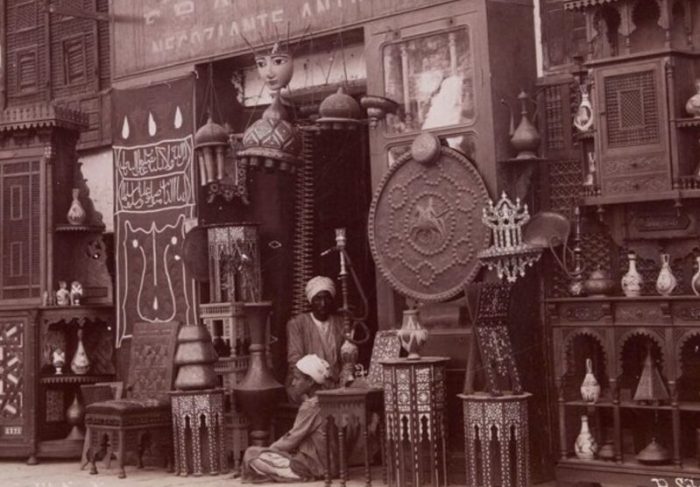
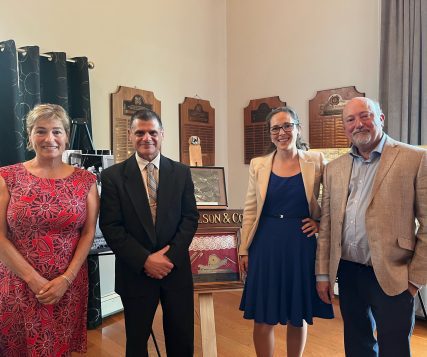




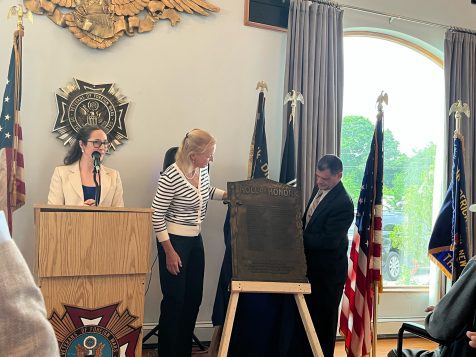


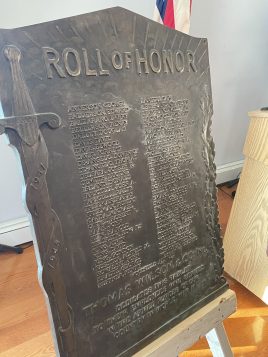
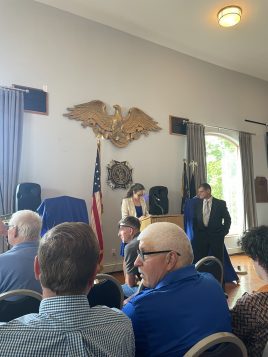


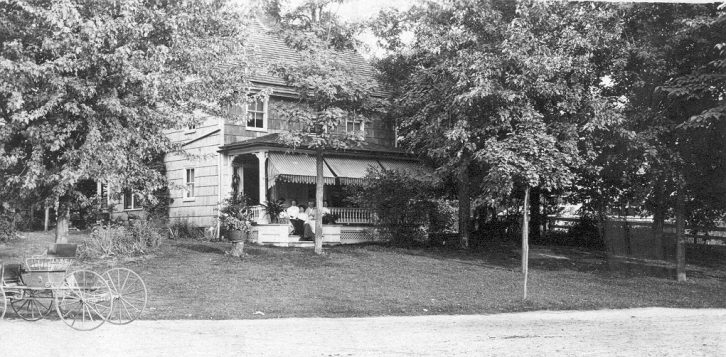



 Rachel and Joon have been best friends since kindergarten, when they bonded over a pirate fantasy. Now, eleven years old, in July, between fifth and sixth grade, they have decided to be spies. Additionally, the inseparable pair are facing Joon’s imminent move out of the district, both fearing the toll the distance will take on their friendship.
Rachel and Joon have been best friends since kindergarten, when they bonded over a pirate fantasy. Now, eleven years old, in July, between fifth and sixth grade, they have decided to be spies. Additionally, the inseparable pair are facing Joon’s imminent move out of the district, both fearing the toll the distance will take on their friendship.


